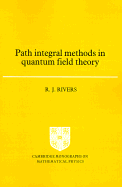Book contents
- Frontmatter
- Contents
- Preface
- 1 Scalar Green functions and their perturbative solutions
- 2 Connected Green functions and their one-particle irreducible components
- 3 Regularisation and renormalisation
- 4 The scalar functional integral
- 5 Series expansions and their summation
- 6 Taking the path integral more seriously
- 7 Quantum theory on non-simply-connected configuration spaces
- 8 Stochastic quantisation
- 9 Fermions
- 10 Quantum electrodynamics
- 11 Non-Abelian gauge theories
- 12 Explicit symmetry breaking and its classical limit
- 13 The effective potential
- 14 Field theory at non-zero temperature
- 15 Field theory at non-zero temperature: real-time formulation
- 16 Instantons
- 17 Composite fields and the large-N limit
- References
- Index
15 - Field theory at non-zero temperature: real-time formulation
Published online by Cambridge University Press: 04 April 2011
- Frontmatter
- Contents
- Preface
- 1 Scalar Green functions and their perturbative solutions
- 2 Connected Green functions and their one-particle irreducible components
- 3 Regularisation and renormalisation
- 4 The scalar functional integral
- 5 Series expansions and their summation
- 6 Taking the path integral more seriously
- 7 Quantum theory on non-simply-connected configuration spaces
- 8 Stochastic quantisation
- 9 Fermions
- 10 Quantum electrodynamics
- 11 Non-Abelian gauge theories
- 12 Explicit symmetry breaking and its classical limit
- 13 The effective potential
- 14 Field theory at non-zero temperature
- 15 Field theory at non-zero temperature: real-time formulation
- 16 Instantons
- 17 Composite fields and the large-N limit
- References
- Index
Summary
Although we have been calculating an energy density (i.e. a static quantity) at thermal equilibrium, the underlying picture is intrinsically dynamical. Most simply, we divide the universe into two parts: a large box in which we perform calculations upon the fields; the rest of the universe, which plays the role of a thermal reservoir at temperature T. Equilibrium is achieved as a result of a dynamical two-way exchange of energy between the fields and the reservoir in which they are immersed, a real-time process.
In the calculations of the previous chapter the underlying dynamics were hidden by the imaginary-time prescription. Although there is no loss in this case, this evasion leaves us feeling somewhat cheated. For example, consider the Yukawa theory of (1.60) in which a B field interacts with A fields via the interaction ½gBA2. Suppose the mass of the B is more than twice that of the A. The population of B particles will change either by their decaying into As, or by real As sustained by the heat-bath colliding to produce them. These individual interactions in real-time will appear as discontinuities (dispersive parts) of the B-field propagator. It is advantageous to be able to calculate them directly, without recourse to analytic continuation from an Euclidean expression in which the heat bath has no role.
In this chapter we shall present a real-time formulation of scalar field theory in thermal equilibrium at finite-temperature to give a flavour of the method. The extension to more realistic theories causes no new conceptual problems.
Any approach to a real-time description has as its key ingredient the doubling of fields (and Hilbert spaces). In the heat-bath picture this can be anticipated canonically in the following way.
- Type
- Chapter
- Information
- Path Integral Methods in Quantum Field Theory , pp. 274 - 288Publisher: Cambridge University PressPrint publication year: 1987

